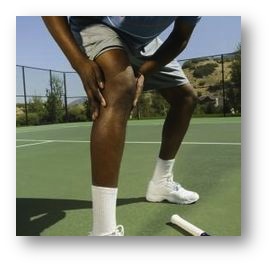
Foam Roll Away Your Aches & Pains
June 24, 2012 // Wellness
Ten years ago, most non-contact injuries were treated with the same approach: Rest, Ice, Compression, and Elevation. Since then, research and resources have improved drastically within the physical therapy and exercise science fields. New methods have been implemented to heal injuries and painful areas, allowing for faster recovery and better prevention. Foam Rolling is one of the newest concepts in the health world and has been very effective in treating aches and pains.
Physical therapists began using foam rolling as a method of treating soft-tissue injuries after new research suggested using massage techniques in conjunction with traditional methods during the rehabilitation process. Deep tissue massage breaks apart adhesions (knots) formed within the muscle. Adhesions are common and often due to immobility, lack of range of motion, or accumulated tension through exercise and activity. Pressure from a massage activates the Golgi Tendon Organ (GTO), which is a safety mechanism used to release tension in muscles. The GTO activates within 15-20 seconds of constant pressure. This is why pressure from even the most painful massage decreases after the initial pressure.
Realizing the effectiveness of massage and pressure, physical therapists created a dense foam tube that can be used in place of a formal massage. This allows anyone to get the benefits of a deep tissue massage without the presence of another person. The usefulness was evident and professionals began to incorporate foam rolling into their rehabilitation programs.
The foam roller has since grown in popularity, particularly in the fitness field. Exercisers and athletes may not be injured, but understand the importance of prevention (hence why most people exercise anyway). Foam rollers are now found in almost every fitness center and are being utilized by trainers for their clients. Preventing an injury is just as important as treating one, so foam rolling can be used by any person regardless of fitness levels/goals.

Foam Rollers typically come in three colors: white, black, and blue. White is the least dense of the foam rollers and is encouraged for people who haven’t felt the pressure of this rehab tool. Black is more dense and better for people with a high tolerance for pain or only site-specific adhesions. Blue foam rollers are similar in density to black ones, but are made of a different material.
Foam rolling can be used at anytime, though it is typically done before and after exercise. Many people see a benefit to using a foam roller before exercise because the muscle massage will allow for greater range of motion with less occurrence of pain. Others prefer to foam roller after all exercise has been completed in order to release the accumulated tension. In any case, the important thing is to understand the effectiveness of massage on muscles and incorporate it when it is most appropriate for each person.

Like any piece of exercise equipment, foam rolling can be misused if technique is not taught properly. Since the practice of foam rolling is still fairly new, instruction can be limited or absent. To better educate the fitness community, examples of five of the most common areas of foam rolling are outlined below.
IT Band
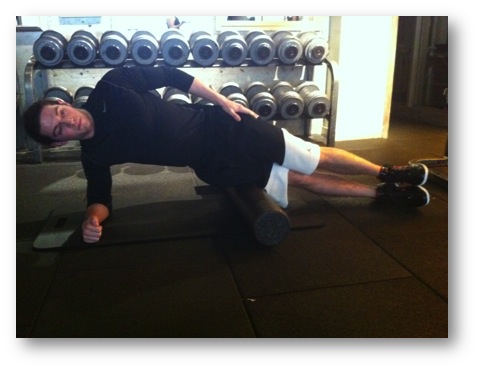
Without question, this is the most painful area when pressure is applied. The IT band is located directly on the side of the leg and is a fibrous reinforcement that runs from the hip to the knee. These fibers can become extremely hardened and tender after repetitive leg motions such as running or cycling. When foam rolling this area, place the roller on the center of the mid thigh. The forearm and ankle should be used as support while pressure is applied to the area. Find the most tender area of the IT band and move the roller a few inches back and forth.
Adductors
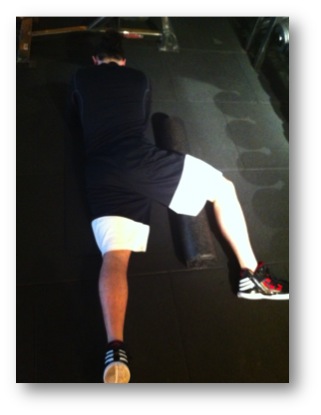
The adductor muscle group consists of six inner thigh muscles. These muscles are designed to keep lower body movement closer to the body. Adductor muscles can carry a lot of tension, especially if the hip area has any limit in range of motion. To release this tension, lay face down and bend one knee to the outside of the hip. Try to form a 90º angle with the knee and hip and place the foam roller between the floor and the thigh. Use the forearms and toes to move the roller onto different areas of the muscles.
Quadriceps
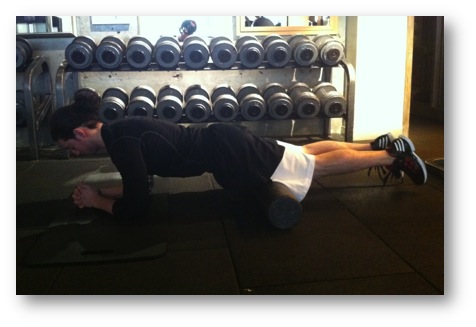
One of the largest muscle groups of the body, the quadriceps make up the front of the thigh. These four muscles are responsible for extending the knee, so their constant demand and use can cause stiffness and pain. Foam Rolling the quadriceps is a fairly simple technique. Use the forearms to brace the body and place the foam roller about half way up the front of the thigh. Keep the toes on the ground to better control the positioning and movement of the roller.
Because of the large size of the quadriceps muscle group, subtle changes will emphasize other muscles. To reposition the stress of the foam roller, try rotating and shifting the thigh side to side. To add a deeper stress, lift one leg up and place all the stress on the contacted leg. Finally, ensure the spine does not curve while in any of these positions.
Piriformis
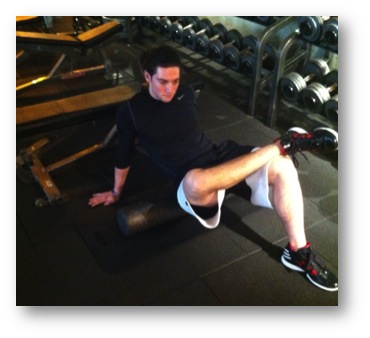
This deep muscle of the hip is the most overlooked muscle of the whole body. Almost all cases of non-contact back pain involve the piriformis. Furthermore, this muscle is directly involved in Sciatica; the piriformis irritates the sciatic nerve, causing pain in the buttocks and referred pain along the sciatic nerve throughout the leg.
Relieving this muscle of tension is highly recommended for anyone regardless of fitness levels/goals. To massage this area, sit down on a slight declined angle on the foam roller, using the hands to brace the body. Position one ankle on top of the opposite bent-knee to form a 90º angle of the raised leg. Emphasize pressure on side of the raised leg by leaning into the foam roller with the exposed hip area.
Calves
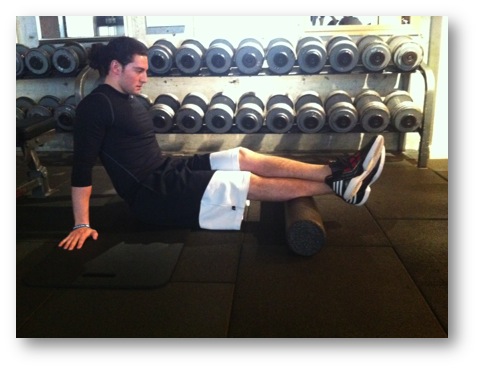
The importance of the calf muscle is best shown during any balance exercises. Calf flexibility and range of motion is crucial to maintaining center of gravity, posture, and gait. Since the use of shoes (especially heels) stresses the calf muscle, massage is highly recommended to alleviate the tension.
To foam roll the calf muscle, sit on the ground and fully extend the legs. Place the foam roller on the biggest area of the calf and place the opposite leg on top of the contacted leg. Use the hands to keep the torso erect and also to control the movement of the roller. To add more pressure, lift the hips off the ground while rolling back and forth.